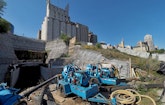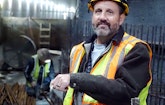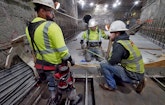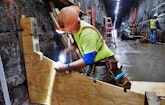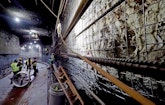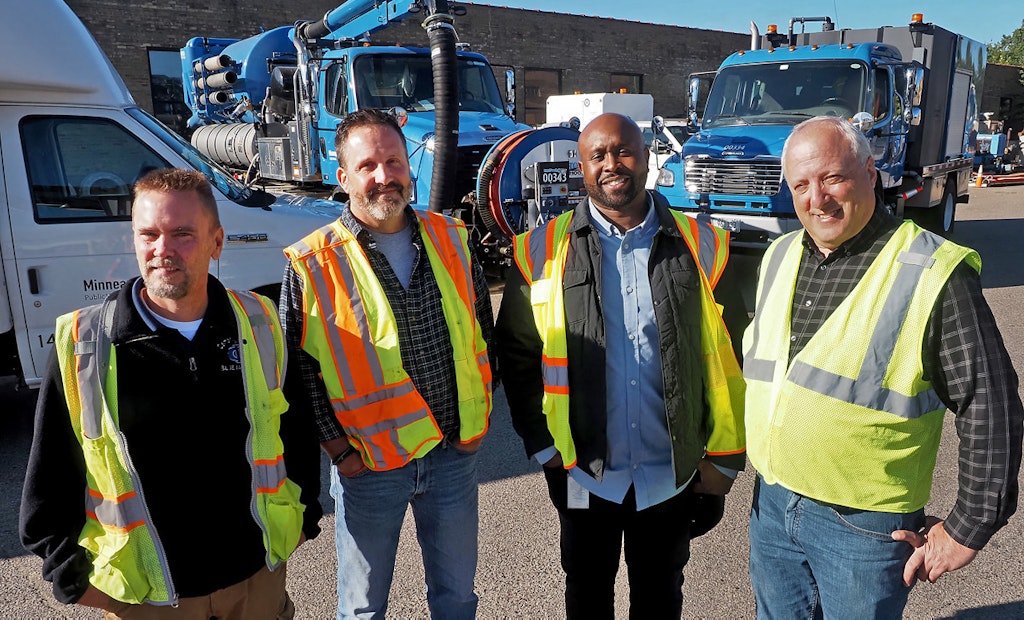
Key leaders in the Minneapolis Surface Water & Sewers Division include (from left) Sean Oberg, sewer maintenance supervisor; Kevin Danen, sewer operations engineer; Curtis Stallings, sewer construction general foreman; and Joe Klejwa, P.E.
The city of Minneapolis is in the midst of a $57 million expansion of a downtown stormwater tunnel system that’s designed to relieve pressure on existing tunnels, reduce long-term maintenance on those tunnels and provide enough additional capacity to handle expected larger...

